Blog
Ancient Artz: Culture, History & Creativity Through Time

I. Introduction: Defining Ancient Art & Its Universal Significance
Step into a world where history breathes through stone, paint, and metal—a realm where human expression, devoid of modern tools, reached astonishing heights. For millennia, ancient artz (and its more commonly spelled variant, ancient art) served as far more than mere decoration; it was the bedrock of civilization, deeply interwoven with daily life, spirituality, power structures, and the very fabric of identity. From the earliest markings on cave walls to the monumental sculptures of empires, ancient art acts as a profound bridge between the physical world and the metaphysical beliefs of our ancestors.
This comprehensive guide will embark on an extraordinary journey through the origins, masterpieces, and enduring legacy of ancient art. We’ll delve into the distinct styles and purposes across diverse civilizations, explore the materials and techniques that brought these creations to life, and crucially, connect these ancient wonders to our modern world through the lens of recent archaeological discoveries, ongoing conservation efforts, and the ever-evolving art market. Prepare to uncover why the echoes of ancient creativity continue to resonate powerfully in the 21st century, addressing the fundamental question: what does “ancient artz” truly mean for us today?
II. The Dawn of Human Expression: Prehistoric Art (40,000 BCE – 3,000 BCE)
The story of ancient art begins long before written history, in the depths of caves and on the surfaces of rocks, where our earliest ancestors first left their indelible marks. This era, spanning from the Upper Paleolithic through the Neolithic periods, laid the fundamental groundwork for all artistic traditions that followed. It reveals a primal human urge to create, to communicate, and to connect with the world around them, transforming raw materials into powerful symbols and narratives.
Cave Paintings: Lascaux, Chauvet, and the Spirit World
Among the most captivating forms of prehistoric art are the breathtaking cave paintings found across the globe. These aren’t just crude sketches; they are sophisticated, multi-layered compositions, often located deep within cave systems, suggesting their ceremonial or spiritual purposes. Sites like Lascaux in France, with its famous Hall of Bulls, and Chauvet Cave, boasting some of the oldest and most dynamic depictions, offer a window into early human cognition and their profound relationship with the natural world [16, 21]. These masterpieces, often rendered with natural pigments like ochre and charcoal, depict a stunning array of animals, abstract symbols, and occasional human figures, hinting at shamanistic rituals or attempts to control the hunt. The very act of their creation, in the flickering light of ancient lamps, must have been a deeply immersive and spiritual experience [51, 52].
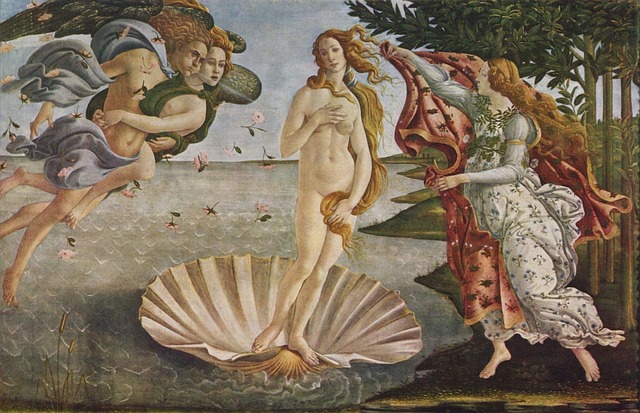
Portable Art: Venus Figurines & Early Carvings
Alongside monumental cave art, early humans created “portable art.” The most iconic are the “Venus figurines” – small carvings of exaggerated female figures, crafted from stone, bone, or ivory. The Venus of Willendorf is the most famous, widely interpreted as symbols of fertility, prosperity, or mother goddesses [21, 23, 25, 48]. Their small size suggests they were personal amulets or ritual objects.

Rock Art & Megaliths: Global Perspectives
Beyond caves, rock art emerged as petroglyphs (carvings) and pictographs (paintings). Examples span the Sahara, Australia, and Pedra Furada in Brazil, which suggests human presence as far back as 60,000 years BP [26, 57, 60]. Megalithic structures like Stonehenge demonstrate evolving sophistication, often tied to astronomical observation and communal ritual.
III. Cradle of Civilizations: Art of the Ancient Near East (3,500 BCE – 539 BCE)
As humanity transitioned to settled agricultural communities, art became a powerful tool for expressing religious devotion, consolidating political authority, and chronicling historical events in the Ancient Near East. This period saw the rise of monumental architecture and sophisticated artistic forms that would influence future empires.
| Civilization | Key Architectural Forms | Notable Art Forms & Works | Primary Purpose |
|---|---|---|---|
| Mesopotamia (Sumer, Akkad, Babylon, Assyria) | Ziggurats (stepped temples) |
| Connecting heavens and earth; chronicling rulers’ power and divine sanction. [1, 17] |
| Persian Empire (Achaemenid Dynasty) | Monumental Palaces (e.g., Persepolis) |
| Conveying the might, diversity, and unity of the empire; political tool. [15, 47] |
IV. The Nile’s Legacy: Ancient Egyptian Art (3,000 BCE – 30 CE)
Dominated by a profound belief in the afterlife and a centralized religious system, Egyptian art was characterized by its unchanging conventions, strict symbolism, and a timeless quality designed to ensure eternal life and order.
Funerary Art: Pyramids, Tombs & Mummification
The most iconic forms of Egyptian art are linked to death. The monumental Pyramids of Giza were tombs for pharaohs [15, 16, 21]. Tombs in the Valley of the Kings contained murals, texts, and sarcophagi to ensure the deceased’s eternal journey. Mummification itself was an art form, preserving the body for the soul, with funerary masks like Tutankhamun’s representing unparalleled skill [23].
Symbolism & Iconography: Gods, Pharaohs & Hieroglyphs
Egyptian art is saturated with symbolism. Gods were depicted with animal heads (Horus as a falcon, Anubis as a jackal) [1]. Pharaohs were shown in idealized, youthful forms to emphasize eternal power. Hieroglyphics, a sacred writing system, were integrated into art, acting as both text and image to convey spells, histories, and decrees [24, 25].
Notable Works
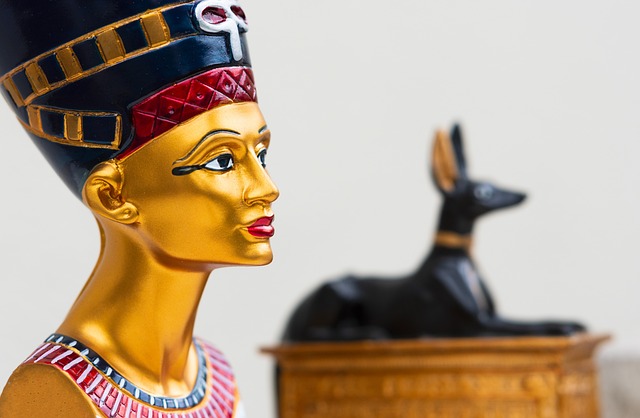
Bust of Nefertiti
Represents a peak of Amarna period artistry, capturing the queen’s striking beauty and regal presence [5, 7, 8].
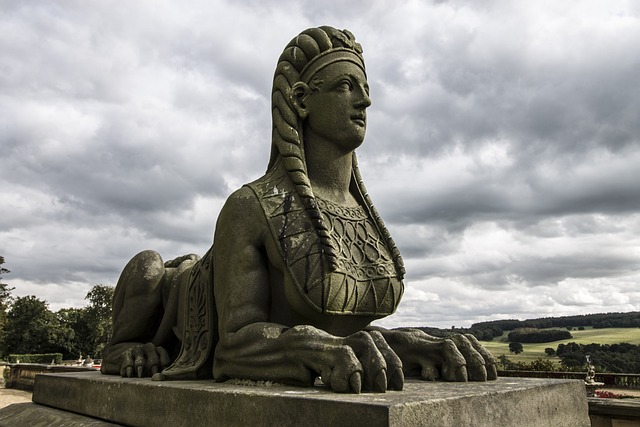
The Seated Scribe
A realistic and individualized portrait, offering a rare glimpse into a non-royal figure and showcasing mastery of stone carving [5].

The Rosetta Stone
A trilingual decree that provided the key to deciphering hieroglyphics, unlocking centuries of Egyptian history and art [10].
V. Classical Ideals: Greek & Roman Art (800 BCE – 476 CE)
The civilizations of ancient Greece and Rome profoundly shaped Western art. While distinct, both cultures emphasized the human form, civic ideals, and practical application, laying foundations that would be reinterpreted for millennia.
Ancient Greek Art: Idealized Forms, Pottery & Architecture
Greek art is renowned for its humanism, idealized forms, and emphasis on balance and proportion [12, 13]. The Classical period saw the development of contrapposto and iconic works like the Parthenon, a temple exemplifying perfect architectural harmony [9]. Sculptors like Phidias and Praxiteles created timeless symbols of classical aesthetics like the Venus de Milo. Greek pottery, with its black-figure and red-figure techniques, served as canvases for mythological narratives.
Ancient Roman Art: Realism, Engineering & Imperial Power
Roman art, influenced by Greece, developed its own character marked by pragmatism, realism, and its use as imperial propaganda [3, 5, 6]. Roman portraiture captured individual features with verism. Their monumental architecture, using concrete and arches, created enduring structures like the Colosseum and the Pantheon [17, 21, 61]. Frescoes, mosaics, and triumphal arches chronicled military victories and the glory of the empire.
The Polychromy Debate: Unveiling Ancient Colors
Contrary to the misconception of stark white sculptures, new research proves that Greek and Roman statues were vibrantly painted (polychromy) [61, 71]. Using UV light and chemical analysis, scholars have found traces of bold pigments—reds, blues, yellows, and greens. Evidence suggests the Parthenon sculptures were richly adorned with paint and metal attachments. This revelation changes our understanding of ancient aesthetics, showing a desire for art to be as vibrant and “alive” as possible, a presence enhanced by perfumes of rose, olive oil, and beeswax [61].
VI. Diverse Expressions: Art Beyond the Mediterranean
While Mediterranean civilizations often dominate the narrative, countless other vibrant artistic traditions flourished globally, each reflecting unique cultural beliefs and environments.
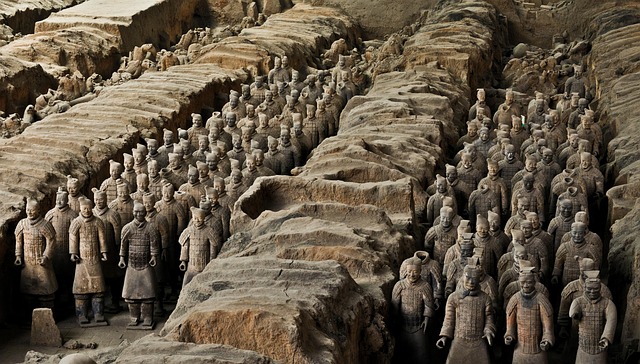
Asian Ancient Art: China, India & Japan
In China, the Terracotta Army stands as a monumental testament to imperial power [14, 15, 16]. Indian art manifested in magnificent rock-cut temples like the Ajanta Caves, intertwined with religious philosophies [22, 24]. In Japan, the Jomon period produced distinctive pottery, while the Kofun period saw the creation of haniwa clay figures [48].
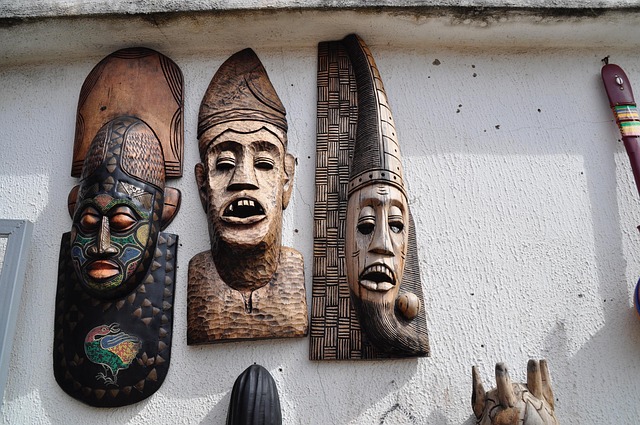
Mesoamerican Art: Olmec, Maya, Aztec
The Olmec are famous for colossal stone heads [2, 16, 17]. The Maya created intricate stelae and vibrant murals linked to astronomy. The Aztec empire produced powerful stone sculptures of gods, featherwork, and painted codices recording their history and religion [47].

African Ancient Art: Rock Art, Nok Terracotta & Masks
Early forms include extensive rock art across the Sahara and southern Africa [14, 22]. The Nok culture of Nigeria is celebrated for its distinctive terracotta figures. Across the continent, carved masks and figurines held profound social and spiritual power in ceremonies and rituals [47].
VII. Materials & Techniques: The Craft of Ancient Artisans
The ingenuity of ancient artisans in transforming raw materials is astounding. Their understanding of properties and innovative techniques allowed them to create art that has survived millennia.
Stone, Clay, Metal & Organic Materials
Artists used diverse materials based on availability and cultural significance. Stone (limestone, granite, marble) was foundational for sculpture and architecture [16, 21]. Clay was universal for pottery and terracotta figures. Metalwork, especially bronze, revolutionized art, enabling intricate casting [54]. Organic materials like wood, ivory, and textiles were also used, though fewer survive.
Painting, Sculpture & Architectural Methods
Painting techniques included fresco and tempera. Sculptural methods varied from direct carving to modeling and casting. The lost-wax casting technique, used in Greece and China for bronze sculpture, allowed for intricate, hollow forms [16, 21, 22]. Architectural methods evolved from post-and-lintel construction to the revolutionary use of concrete and the arch by the Romans, enabling vast structures like domes and aqueducts [25].
VIII. The Living Past: Ancient Art in the 21st Century
Ancient art is a vibrant, living field, continuously reshaped by new discoveries, technologies, and global dialogues. This section delves into its ongoing relevance with insights from 2024-2025.
Latest Discoveries & Archaeological Insights (2024-2025)
Each year brings groundbreaking discoveries. Recent finds highlight the continuous unveiling of the past [72]:
- The Making of a Moche Queen (Peru): New evidence reveals more about the sophisticated Moche civilization and its powerful female rulers.
- Reindeer Hunters’ Wall (Baltic Sea): A monumental Stone Age structure provides insights into early human cooperation.
- Aswan’s Great Necropolis (Egypt): Ongoing explorations yield new tombs, deepening knowledge of regional power structures.
- Origins of the Scythians (Siberia): New evidence sheds light on the migrations of the Scythians, renowned for their gold artworks.
- Pedra Furada, Brazil: Re-evaluation continues to support dates up to 60,000 BP, pushing back the timeline for human presence in the Americas [60].
The Art Market for Antiquities: Trends & Dynamics
The market for ancient art shows interesting trends. The Art Basel and UBS Global Art Market Report 2025 indicates a “flight to perceived safety,” with older sectors like Old Master art reporting stable or increasing sales during uncertain economic times.
Global Art Market Share (2024)
Repatriation Debates & Ethical Considerations
One of the most complex issues is the repatriation of cultural property. Many artifacts in Western museums were acquired during colonial periods, leading to calls for their return. Museums are seeking inventive solutions like long-term loans [56]. Institutions like The Metropolitan Museum of Art are committed to responsible collecting, adhering to the 1970 UNESCO Convention and actively returning items like the Benin bronzes to Nigeria [4, 58].
IX. How to Experience Ancient Art Today
The allure of ancient art is best appreciated through direct engagement. Whether in person or virtually, numerous avenues exist to explore these timeless masterpieces.
Visiting Museums & Archaeological Sites
The most immersive way to experience ancient art is to visit the world’s great museums and archaeological sites.
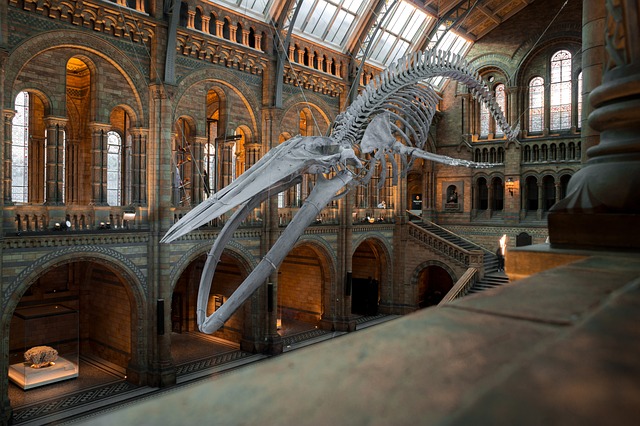
The Louvre Museum (Paris)
Home to the Venus de Milo, the Seated Scribe, and an extraordinary collection of ancient art from around the world. [5, 6, 7, 8]
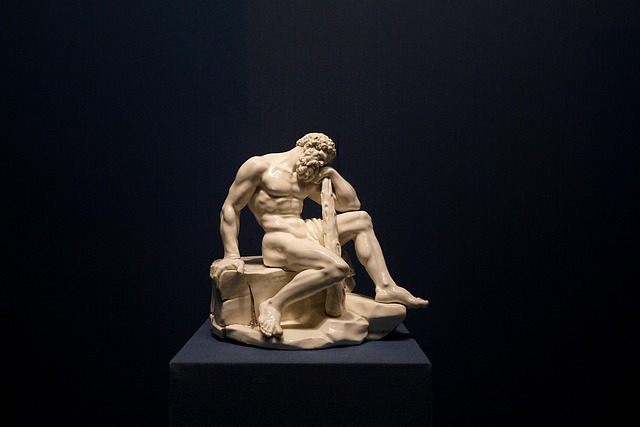
The British Museum (London)
Features artifacts like the Rosetta Stone and the Parthenon Marbles, offering a global perspective on ancient civilizations. [9, 10, 11]

The Metropolitan Museum of Art (NYC)
Features extensive departments dedicated to Ancient American, Greek and Roman, and Egyptian art. [2, 3, 4]
Digital Exploration: Virtual Tours & 3D Models
For those unable to travel, many leading museums offer virtual tours. Initiatives like CyArk provide 3D models and VR experiences of cultural heritage sites, allowing for detailed exploration from anywhere in the world.
Educational Resources & Further Study
For deeper learning, resources like Khan Academy and Smarthistory offer free, comprehensive courses. You can also explore academic journals like the American Journal of Archaeology for the latest research.
X. Frequently Asked Questions (FAQs)
What does “ancient artz” mean?
“Ancient artz” is a phonetic or slightly misspelled variation of “ancient art.” It refers to the artistic expressions, practices, and artifacts created by early human civilizations from the Upper Paleolithic period (roughly 40,000 BCE) through the fall of the Western Roman Empire (476 CE).
What are the main characteristics of ancient art?
- Symbolism: Deep religious, mythological, or political meaning.
- Idealism vs. Realism: Greek art often idealized forms, while Roman art leaned towards realism.
- Monumentality: Large-scale structures like pyramids and ziggurats.
- Functionality: Art often served practical, ritualistic, or commemorative purposes.
- Polychromy: The use of vibrant colors, though often faded today.
Who are some famous ancient artists?
Unlike modern art, individual artists were rarely recorded. Most art was produced by skilled, anonymous artisans. However, we know of influential sculptors like Phidias and Praxiteles from ancient Greece, whose styles shaped the classical ideal.
Why is ancient art important today?
It provides invaluable insights into human history, beliefs, and societal structures. It helps us understand the origins of human creativity, trace the development of civilizations, and engage in critical contemporary discussions about cultural heritage, ethics, and repatriation.
What is the oldest evidence of art?
The oldest undisputed evidence includes cave paintings in sites like Chauvet and Lascaux (over 30,000 years old) and portable art like the Venus of Hohle Fels (around 35,000-40,000 years old). Sites like Pedra Furada in Brazil suggest potential artistic activity dating back as far as 60,000 BP.
XI. Conclusion: The Timeless Human Urge to Create
The journey through ancient artz is a powerful reminder of humanity’s innate and enduring urge to create. From the earliest whispers of expression in prehistoric caves to the grandeur of imperial monuments, ancient art serves as a vibrant testament to the ingenuity, beliefs, and aspirations of civilizations long past. It is a field that continues to evolve with every new archaeological excavation, every scientific advancement in conservation, and every critical conversation about cultural ownership.
By understanding the historical context, appreciating the technical mastery, and engaging with the contemporary relevance of ancient art, we not only connect with our shared human heritage but also gain profound insights into the present. The echoes of the past, vibrant and complex, continue to inspire, challenge, and shape our understanding of art, culture, and ourselves.
